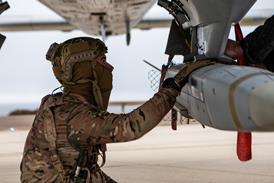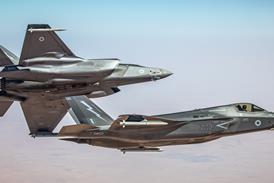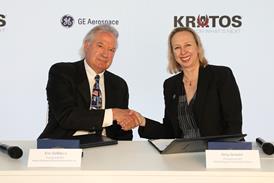The first batch of results from the European airlines for the April-June quarter, at least in terms of yields, provides further evidence of the benefits of controlling capacity against the background of the improving traffic environment. Whilst fuel remains an issue and, in particular, the fact that prices have remained high during the summer, a reading of the revenue lines gives grounds for encouragement.
The results from the US airlines, although generally in the right direction, are a little less clear cut. Again fuel plays its part.
As discussed in the past, fuel price can clearly provide a big swing in either direction on reported profitability (see April p76). In 1998, and into the early part of last year, fuel had a reasonably positive effect which in fact covered up a sharp fall in the performance of many of the airlines. This time, unsurprisingly, fuel has been a major profit depressant and will, in the absence of fuel surcharges, continue to act to negate the underlying improvement which has arisen primarily on the revenue side.
Notwithstanding, there have been some significant advances in operating profit for the European airlines that have reported so far in the quarter - albeit starting from a low base. British Airways appears to have been slow to benefit from from the operational gearing - an inherent feature of the airline industry -but it was always known that the recovery would take some time. All other things being equal (not necessarily including the acquisition of KLM), it will emerge from its troubles structurally more profitable.
In reality, BA's flat operating profit is a step in the right direction against a background where average dollar fuel price increased by 70%. Currency too has been a problem, although this is nothing new in BA's recent history. Indeed, the UK carrier's fall from grace as one of the world's leading airlines profit makers has been exacerbated by the reversal in the fortunes of the UK pound. Since BA's recent profit high-point in March 1998, the pound has risen by some 2-2.5% against key European currencies. Conversely, the continental European airlines have benefited.
Europe's leading low-cost contender, Ryanair also turned in respectable profit numbers, although it is clear from the percentages that profits have not risen as fast as revenue.
Another way to look at profitability is to examine the margin made on incremental revenue - in other words, the profit yielded from the additional revenue. Here, the clear star is SAS.
At a more macro level, figures from the Association of European Airlines (AEA) show that the favourable gap between passenger traffic (growing above 8%) and seat capacity (closer to 5.5%) has continued. Indeed, the Commerzbank/Airline Business traffic demand indicator model suggests an underlying rate of traffic demand for the European airlines of just over 8% on international routes.
So what does this mean? Excess of demand should do as much good to yields and profits as excess supply does harm. Furthermore, forward bookings seem to indicate that this is not a blip, rather it is the start of a trend.
The evident control over capacity has shown through in a marked uplift in yield per available seat kilometre (seat yield). That not only reflects the better operating environment, but also the fact that a more controlled rate of capacity growth has resulted in better load factors.
The contrast with growth in the June quarter a year ago is dramatic. Whilst BA and KLM led the way last year in taking steps to check capacity, they were acting in splendid isolation. Their action achieved little overall. It was not until others followed suit that there was a resolution of the massive imbalance between traffic and capacity and also the foundations were laid to enable traffic to grow into a more realistic level of capacity, which enabled the benefits of these actions to begin to show through.
Here, it is worth repeating that tried and tested piece of wisdom that market share alone in increasingly open markets will not guarantee pricing power or profit.
Currency impact
Again there are other factors, such as currency to take into account. The Euro has weakened by some 11.6% against the Dollar and by 7.4% against the UK pound since the corresponding period last year. If currencies had remained unchanged then the increase in yield per seat for KLM would have been some 8% - still a dramatic improvement. For SAS the increase would have been marginally greater at 7.8%. Although BA's yield rose by some 5.9%, this reflected the composite of a 10% increase in yields on the North Atlantic and a flat performance in Europe. BA reported an improvement in transfer yields too.
The impact of currency of course depends on both the route structure and the origin of the traffic flows. For KLM the North Atlantic market has always been key and the last quarter was good in traffic terms. The monthly traffic statistics revealed the strength of the traffic in this segment. In April, business class traffic for the Dutch airline was some 12% higher and for both May and June it rose by a staggering 26%. Overall, the uplift on the North Atlantic led to a 10% rise in passenger yields per revenue passenger kilometre and, on a good estimate, by closer to 15% per seat. But again, over the same period, the Dutch guilder declined by 11.6% against the dollar.
An interesting thought to conjure with is whether the yields in some cases could have been even better if the memory of last year's trauma had not persuaded some airlines to panic and sell some of their seat capacity too early at too low a price. Indeed, SAS seems to have suffered from this to some extent.
Revenue prospects
The performance on the revenue side of the equation has not only improved but looks good into the future too. For the most part (except perhaps KLM) rigorous control continues to be exercised over future capacity growth. Indeed the message from many of the management's that have reported so far has been to underline the significance of and benefit from the slower rates of capacity growth that have been evident this year so far. Indeed it is also reasonably clear that the thesis holds true that periods of pain generally provoke an outbreak of more rational behaviour.
Although there has clearly been an improvement on the revenue side and indeed in a number of cost areas too, fuel, despite hedging remains a problem. There are several ways to show the impact of the increase in the fuel price. At this stage the focus is on the effect that it has on offsetting improved revenue performance. As ever, simple measures can often be the best and here the simplest is to look at the change in the fuel bill related to the change in revenue. Of course there are always distortions with aggregate figures but in this case they are negligible.
Not only was fuel a problem in the June quarter but with the fuel price testing new highs now - at a time when a reversal might reasonably be expected - the outlook does not augur well. Indeed industry- wide fuel surcharges of perhaps some 4% could be just around the corner. Even a surcharge of this size is unlikely to have an impact on travel in the current environment. On a $200 fare it would not add much more than the cost of two or three cappuccinos in a designer coffee house.
In conclusion, there is a better revenue outlook in the near and medium term, even allowing for an economic slowdown in the US. Continuing rational behaviour is in prospect from the airlines despite new aircraft orders and option conversions. The darker clouds come in two areas: the prospect of a fuel surcharge to recoup the oil price hike; and some labour problems that are beginning to emerge. But it appears that the present good news could just be the start of something more sustainable. Keep watching this space for further developments.
Source: Airline Business























